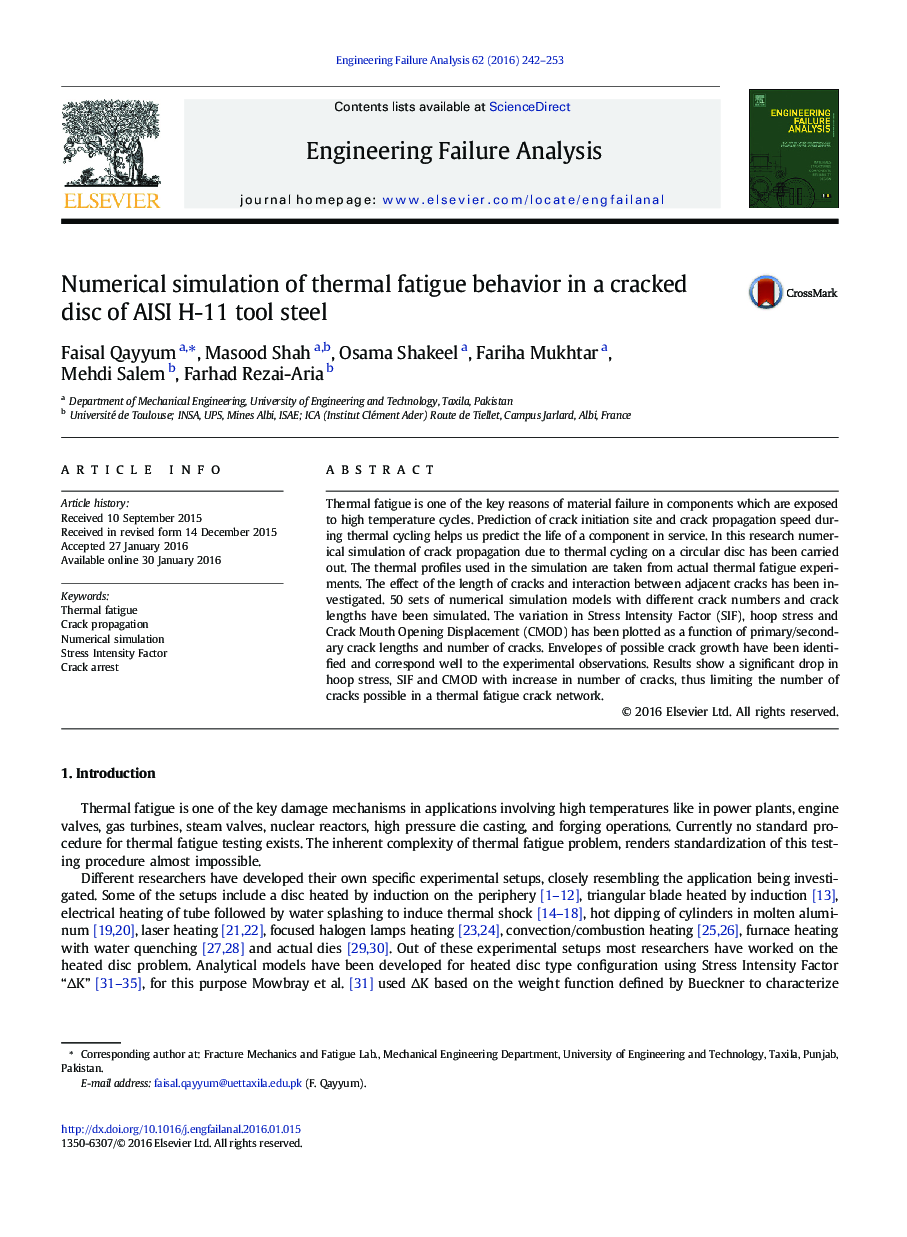| Article ID | Journal | Published Year | Pages | File Type |
|---|---|---|---|---|
| 763322 | Engineering Failure Analysis | 2016 | 12 Pages |
•Decoupled thermo-mechanical simulation model was effectively employed.•Detailed temperature dependent material model of AISI H11 was used during simulation.•Crack propagation envelopes were determined by plotting surface plots of J-integral.•It was found that CMOD does not represent proper crack tip stresses presently.
Thermal fatigue is one of the key reasons of material failure in components which are exposed to high temperature cycles. Prediction of crack initiation site and crack propagation speed during thermal cycling helps us predict the life of a component in service. In this research numerical simulation of crack propagation due to thermal cycling on a circular disc has been carried out. The thermal profiles used in the simulation are taken from actual thermal fatigue experiments. The effect of the length of cracks and interaction between adjacent cracks has been investigated. 50 sets of numerical simulation models with different crack numbers and crack lengths have been simulated. The variation in Stress Intensity Factor (SIF), hoop stress and Crack Mouth Opening Displacement (CMOD) has been plotted as a function of primary/secondary crack lengths and number of cracks. Envelopes of possible crack growth have been identified and correspond well to the experimental observations. Results show a significant drop in hoop stress, SIF and CMOD with increase in number of cracks, thus limiting the number of cracks possible in a thermal fatigue crack network.
Graphical abstractFigure optionsDownload full-size imageDownload as PowerPoint slide
